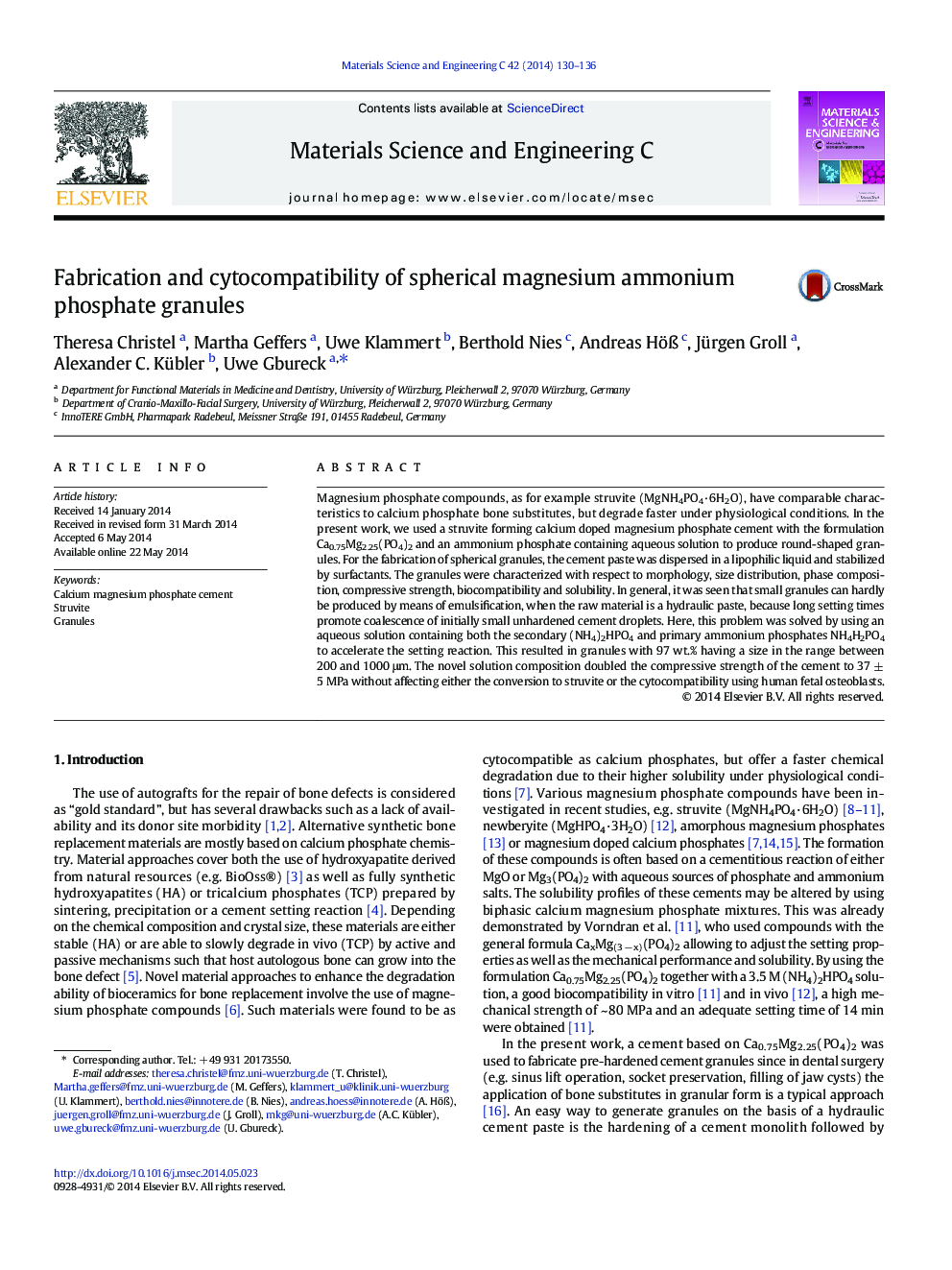| Article ID | Journal | Published Year | Pages | File Type |
|---|---|---|---|---|
| 1428620 | Materials Science and Engineering: C | 2014 | 7 Pages |
•We present the granulation of a hydraulic cement paste via emulsification process.•The cement paste consists of a struvite forming cement system.•The resulting granules have a spherical shape and are smaller than 1000 μm.•A good compressive strength, struvite content and biocompatibility could be proved.
Magnesium phosphate compounds, as for example struvite (MgNH4PO4·6H2O), have comparable characteristics to calcium phosphate bone substitutes, but degrade faster under physiological conditions. In the present work, we used a struvite forming calcium doped magnesium phosphate cement with the formulation Ca0.75Mg2.25(PO4)2 and an ammonium phosphate containing aqueous solution to produce round-shaped granules. For the fabrication of spherical granules, the cement paste was dispersed in a lipophilic liquid and stabilized by surfactants. The granules were characterized with respect to morphology, size distribution, phase composition, compressive strength, biocompatibility and solubility. In general, it was seen that small granules can hardly be produced by means of emulsification, when the raw material is a hydraulic paste, because long setting times promote coalescence of initially small unhardened cement droplets. Here, this problem was solved by using an aqueous solution containing both the secondary (NH4)2HPO4 and primary ammonium phosphates NH4H2PO4 to accelerate the setting reaction. This resulted in granules with 97 wt.% having a size in the range between 200 and 1000 μm. The novel solution composition doubled the compressive strength of the cement to 37 ± 5 MPa without affecting either the conversion to struvite or the cytocompatibility using human fetal osteoblasts.
Graphical abstractFigure optionsDownload full-size imageDownload as PowerPoint slide
